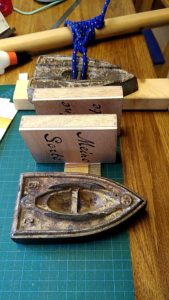If you're interested in learning more about purple mollusc dye but missed the webinar a while ago - the recording of the session is available in the video archive of the American School of Classical Studies, and you can find it here.
There's a lot more things in the archive as well, sorted by category, so if you're into Classical studies, it's probably worth a look and a browse.
In not-so-classical news, I've been very busy sending out distaffs and spindles in preparation for the next online classes, and I'm already looking forward to the next one. If you'd like to join in for the English language one on June 30, there's still a few days left to book: I've set the deadline to June 10 to make sure that the parcel with the kit will definitely arrive in time within Europe. So don't miss it!
There's a lot more things in the archive as well, sorted by category, so if you're into Classical studies, it's probably worth a look and a browse.
In not-so-classical news, I've been very busy sending out distaffs and spindles in preparation for the next online classes, and I'm already looking forward to the next one. If you'd like to join in for the English language one on June 30, there's still a few days left to book: I've set the deadline to June 10 to make sure that the parcel with the kit will definitely arrive in time within Europe. So don't miss it!






 Pressing with weights until the glue has set...
Pressing with weights until the glue has set... The image that goes with the Textile Chat session... clicking it should bring you to the event info page.
The image that goes with the Textile Chat session... clicking it should bring you to the event info page.
